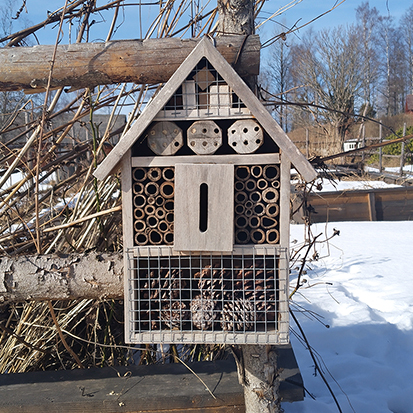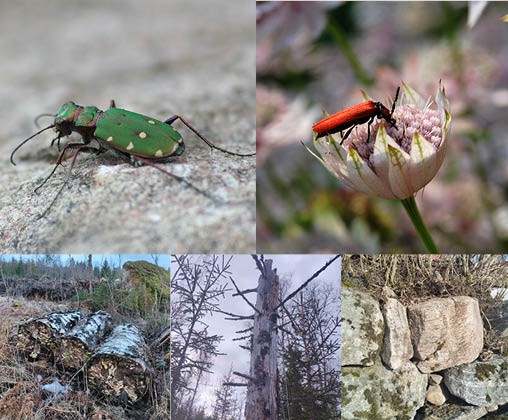- Startsida torsby.se
- / Bygga, bo & miljö
- / Naturvård, parker
- / Torsby fjärilspark
- / Torsby Butterfly Park
- / Infosign 3
Enhet
- Kommunkansliet
- Telefon: +4656016000
- E-post: torsby.kommun@torsby.se
- Postadress:
- Torsby kommun
- 1. Kommunkansliet
- 685 80 Torsby
- Besöksadress: Nya Torget 8, Torsby
Person
- Evelina Palm
- Stadsarkitekt/Planchef
- Tfn: +4656016020
- Mobil: +46730497019
- E-post: evelina.palm@torsby.se
- Besöksadress: Nya Torget 8, Torsby
När du kontaktar kommunen via brev eller e-post, kommer vi att behandla dina personuppgifter enligt dataskyddsförordningen
Life in the deadwood
Torsby municipality has created a park in the town center of Torsby. The purpouse of the park is to support biodiveristy and create awarness among people. In the park there is several infosign, here you can read these in english.
Little nests
Everyone needs a safe place, a home. Many of our pollinators dig out their own nests and lay their eggs in sand and gravel. Dead trees are also attractive nesting spots for many insects.
The butterfly park has prepared sandbeds and insect hotels. The trees in the park and its´ surroundings also provide additional protection for insects, birds and other animals.
How to build an insect hotel
Find, or build, a box for the frame of the hotel.
Place the frame in a sunny and wind protected spot, preferably close to flowers, trees or bushes.
Put some partition walls in to make a number of compartments in the hotel.
Fill the compartments with different nature materials, like wood drilled with 2-12 mm wide and minimum 10-15 cm deep holes. 12-15 cm long bamboo sticks, wood shavings, reed straws or bricks with holes.
Fill the compartments and cover the front with chicken wire for protection agains birds and keeping everything staeady and in place.

Insect hotel
Pollination and beetles
We mostly associate pollinators with bees and butterflies but beetles can also spread pollen. The oldest proof of this is an archeological finding in amber, a 99 million years old beetle with 62 pollen grains stuck to it.
Beetles often thrives in environments such as sunlit areas of stone, gravel and sand (for exempel stonewalls and grawel roads) but also old and dead forest trees, as you can se exempels of in the picture below.

Upper left: The tiger beetle, a lightning fast predator, likes sandy, sunny locations. Upper right: The net-winged beetle is one of our contemporary beetles. Below: pictures of importans habitats for many insects
Innehållsansvarig: Evelina Palm
Senast genomgången:
Senast uppdaterad:
Saknar du någon information?
Har du synpunkter på den här sidan, tar vi tacksamt emot dem. Fyll i formuläret nedan och dina synpunkter skickas till ansvarig för sidan. Om du anger din e-postadress kan vi ge återkoppling. Tack för att du hjälper oss att skapa en bättre webbplats.

